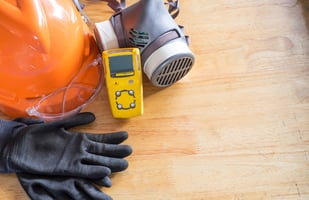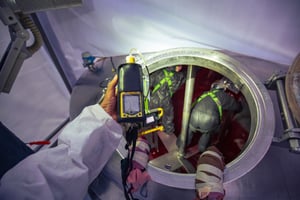Catalytic gas sensors are widely used for detecting combustible gases in industrial and safety...
Understanding the Order of Gas Testing: Oxygen, Flammable Gas, and Toxic Gas
When conducting gas tests in environments like confined spaces, it is crucial to follow a specific order: testing for oxygen first, followed by flammable gases, and finally toxic gases. This sequence, known as the "OFT" (Oxygen, Flammable, Toxic) order of testing, is designed to ensure safety by addressing the most immediate and life-threatening risks first.
The Importance of Oxygen Testing First
Oxygen testing is prioritised because the presence of adequate oxygen is essential for both human safety and the proper functioning of gas detection equipment. An oxygen-deficient atmosphere can lead to suffocation, while an oxygen-enriched environment increases the risk of fire and explosion. Furthermore, many gas sensors, including catalytic sensors, require oxygen to operate effectively. These sensors detect flammable gases by burning them in the presence of oxygen, which changes the resistance in the sensor and produces a measurable output signal.
Flammable Gas Detection: The Role of Catalytic Sensors
After confirming safe oxygen levels, the next step is to test for flammable gases. Catalytic sensors are commonly used for this purpose due to their reliability and ability to detect a wide range of hydrocarbon gases. These sensors work by utilising a catalytic material that reacts with flammable gases in the presence of oxygen, causing a rise in temperature and a corresponding change in electrical resistance. This process is crucially dependent on the presence of oxygen, as it forms part of the fire triangle—oxygen, heat, and fuel—which are the essential components needed to sustain combustion.
Challenges with Catalytic Sensors
Despite their advantages, catalytic sensors have limitations:
Oxygen Dependence: They require a minimum level of oxygen to function, making them ineffective in oxygen-deficient environments.
Sensitivity to Contaminants: Catalytic sensors can be poisoned by certain chemicals, such as silicone vapours, which coat the sensor and inhibit its function. This makes them unsuitable for environments where such contaminants are present.
Measurement Range: These sensors typically measure gas concentrations in terms of the Lower Explosive Limit (LEL), which may not provide sufficient detail for all applications.
Concluding with Toxic Gas Testing
The final step in the OFT sequence is testing for toxic gases. Although toxic gases pose serious health risks, they are generally considered less immediate threats compared to oxygen deficiency or flammable gas presence. Modern gas detection instruments often allow simultaneous detection of multiple gases, but the focus remains on addressing the most pressing hazards first.
Conclusion
The OFT order of testing—oxygen, flammable, and toxic gases—is a critical safety protocol in industrial and confined space environments. By ensuring that oxygen levels are adequate, checking for flammable gases with reliable sensors, and finally assessing toxic gas levels, this method prioritises the most immediate dangers, thereby safeguarding workers and facilities. Understanding the limitations and requirements of catalytic sensors, such as their dependence on oxygen and susceptibility to contamination, further underscores the importance of following this systematic approach to gas testing.







